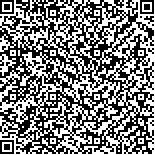乔冰,杨进华,王晨宇,等.干细胞治疗联合有氧运动对急性心肌梗死大鼠左心室重塑的影响[J].中华物理医学与康复杂志,2023,45(5):385-390
扫码阅读全文

|
| 干细胞治疗联合有氧运动对急性心肌梗死大鼠左心室重塑的影响 |
|
| |
| DOI:10.3760/cma.j.issn.0254-1424.2023.05.001 |
| 中文关键词: 有氧运动 干细胞疗法 急性心肌梗死 大鼠 心脏重塑 |
| 英文关键词: Aerobic exercise Exercise Stem cell therapy Myocardial infarction Cardiac remodeling |
| 基金项目:河南省科技攻关项目(232102321125) |
|
| 摘要点击次数: 4345 |
| 全文下载次数: 4051 |
| 中文摘要: |
| 目的 观察干细胞治疗联合有氧运动对急性心肌梗死大鼠左心室重塑的影响。 方法 采用结扎冠状动脉前降支方法将60只6周龄雄性Wistar大鼠制成急性心肌梗死动物模型,并随机分为模型组、干细胞组、运动组及观察组,同时选取10只健康Wistar大鼠纳入假手术组。干细胞组和观察组大鼠于造模成功后经尾静脉输注骨髓间充质干细胞悬液,运动组和观察组大鼠于造模4周后给予跑台运动干预(每天运动60 min,每周运动5 d,连续运动8周)。于造模4周后及末次训练结束时利用递增负荷运动实验评估大鼠运动能力,于末次训练结束时采用超声成像系统检测大鼠心脏结构及功能,取左心室组织进行Masson染色并计算胶原容积分数,采用实时荧光定量PCR技术检测大鼠心肌脑钠肽(BNP)、β-肌球蛋白重链(β-MHC)、α-MHC mRNA表达量以及α-MHC/β-MHC比值。 结果 与假手术组比较,模型组力竭时间、力竭距离明显缩短,最快跑速、左心室射血分数(LVEF)、左心室缩短分数(LVFS)、α-MHC表达量及α-MHC/β-MHC比值显著降低(P<0.05),安静时心率、胶原容积分数、BNP和β-MHC表达量显著增加(P<0.05)。与模型组比较,干细胞组力竭时间、力竭距离、最快跑速、安静时心率、BNP、β-MHC、α-MHC和α-MHC/β-MHC比值均无显著变化(P>0.05),LVEF和LVFS均明显升高(P<0.05),胶原容积分数显著降低(P<0.05);观察组力竭时间、力竭距离、最快跑速、LVEF、LVFS、α-MHC表达量和α-MHC/β-MHC比值均明显增加(P<0.05),安静时心率、胶原容积分数、BNP和β-MHC表达量均明显降低(P<0.05)。与干细胞组比较,观察组力竭时间、力竭距离、最快跑速、α-MHC表达及α-MHC/β-MHC比值均明显增加(P<0.05),安静时心率、胶原容积分数、BNP及β-MHC表达均明显降低(P<0.05))。 结论 单纯有氧运动或干细胞治疗均可抑制心肌梗死大鼠左心室重塑并改善心功能,两种疗法联用具有协同作用,能进一步增强干细胞治疗效果。 |
| 英文摘要: |
| Objective To explore the effect of supplementing stem cell therapy with aerobic exercise in left ventricle remodeling after myocardial infarction. Methods Sixty 6-week-old male Wistar rats had acute myocardial infarction induced by ligation of the anterior descending coronary artery. They were then randomly divided into a model group, a stem cell group, an exercise group and an observation group. Another ten healthy Wistar rats formed a sham operation group. The rats in the stem cell and observation groups were infused with a suspension of bone marrow mesenchymal stem cells through the tail vein. Beginning four weeks later, the exercise and observation groups underwent 60 minutes of aerobic treadmill exercise 5 days per week for 8 weeks. At the beginning and end of the eight weeks the rats′ exercise performance was evaluated using a graded treadmill exercise test. And after the last training session cardiac structure and function were detected using ultrasound imaging. Tissue was then collected from the left ventricles and the collagen volume fractions were calculated. The expression of myocardial brain natriuretic peptide (BNP), heavy chain β-myosin (β-MHC) and α-MHC mRNA was detected using real-time fluorescence quantitative PCRs. Results Compared with the sham operation group, the time and distance to exhaustion shortened significantly in the model group, with a significant decrease in the average maximum running speed, left ventricle ejection fraction (LVEF), left ventricle shortening fraction (LVFS), expression of α-MHC and the α-MHC/β-MHC ratio. There was a significant increase in the average resting heart rate, collagen volume fraction, expression of BNP and β-MHC in the model group. Compared with the model group, there was a significant increase in the average LVEF and LVFS of the stem cell group as well as in the time and distance to exhaustion, maximum running speed, expression of α-MHC and in the α-MHC/β-MHC ratio of the observation group, but a significant decrease in the average collagen volume fraction of the stem cell group compared with the observation group, together with the resting heart rate, collagen volume fraction, the expression of BNP and of β-MHC. Compared with the stem cell group, the observation group showed a significant increase in the average time and distance to exhaustion, maximum running speed, expression of α-MHC and the α-MHC/β-MHC ratio, with a significant decrease in the average resting heart rate, collagen volume fraction, expression of BNP and β-MHC. Conclusion Aerobic exercise or stem cell therapy alone can inhibit left ventricular remodeling and improve cardiac function after myocardial infarction, at least in rats. The combination of the two treatments has a synergistic effect and can further enhance the effect of stem cell therapy. |
|
查看全文
查看/发表评论 下载PDF阅读器 |
| 关闭 |
|
|
|